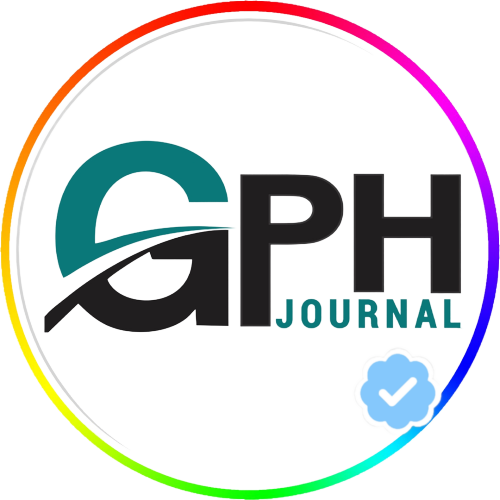Intellectual Capital and Organizational Innovation: Evidence from Commercial Banks in Akwa Ibom State, Nigeria
Abstract
The study examined intellectual capital and organizational innovation in commercial banks Alkwa Ibom State, Nigeria. Intellectual capital was measured using human and social capital, the proxies of organizational innovation were product and process innovation. The researcher adopted explanatory design while primary data was collected through the administration of a structured questionnaire. The selected population of the study were 202 employees from eight chosen banks in Alkwa Ibom State. Copies of the questionnaire were administered to sample size of 134 employees comprising managers and supervisors of eight selected banks. Convenience sampling method was applied. Spearman Rank Correlation with the aid of Statistical Package for Social Science (SPSS) were used to test the hypotheses. The results of the analyses indicated that proxies of intellectual capital have positive significant relationship with the measures of organizational innovation. The researcher concluded that human capital contributed to product innovation in the banks. Thus, it was recommended thatBanks should promote human capital by training and developing their employees to be more competent in their work necessary to drive product innovation.\
Downloads
References
Angelmar, R. (2014). Product innovation: A tool for competitive advantage. Insead, Fontainebleau.
Ashraf, G., Kadir, S., Pihie, Z. A. & Rashid, A. M. (2014). The mediator role of organisational innovation between organisational culture and organisational effectiveness. British Journal of Education, 2(6), 30-54.
Barney, J. (1991). Firm resources and sustained competitive advantage. Journal of Management, 17(1), 99-120.
Bontis, N. (2002). World congress on intellectual capital readings. Butterworth Heinemann.
Brown, J. (2009). Intellectual capital and innovation: Implications for new service development. Cass Business School.
Bi, K., Sun, D., Zheng, R.,& Li, B. (2006). The construction of synergetic development system of product innovation and process innovation in manufacturing enterprises.Proceedings of the 13 International Conference on Management Science and Engineering (ICMSE), 5(10), 628-636. Lille.
Chahal, H., &Bakshi, P. (2016). Measurement of intellectual capital in the Indian banking sector. The Journal of Decision Makers, 41, 61-73.
Chandrajit, B. (2014). The human factor: The fundamental driver of innovation. The global innovation indexes.
Crossley, N. (2008). Networking out: Social capital in a private health club. The British Journal of Sociology, 59(3), 475-500.
Christensen, C. M. (2017), The innovator’s dilemma. Harvard Business Review Press.
Drucker P. F. (1985). The Discipline of innovation. Harvard Business Review,63(3), 67-72.
Damanpour, F. (1991). Innovation: A meta-analysis of effects of determinant and moderators. Academy of Management Journal, 34, 555–590.
Damanpour, F. &Gopoalakrishnan, S. (2001). The dynamics of the adoption of product and process innovations in organizations. Journal of Management Studies,38(1), 46-65.
Edvinsson, L., & Malone, M. S. (2017), Intellectual capital: The proven way to establish your company’s real value by measuring its hidden brain power. Harper Collins Publishers.
Erickson, G. S., & Rothberg, H. N. (2009). Intellectual capital in business-to-business markets. Industrial Marketing Management, 38(2), 159-165.
Guthrie, J., & Dumay, J. (2015). New frontiers in the use of intellectual capital in the public sector. Journal of Intellectual Capital, 16(2), 258-266.
Jimenez, D., &Vall, R. (2011). Innovation, organizational learning, and performance. Journal of Business Research, 64(4), 408-417.
Katz, R. D. (2014). Managing professionals in innovative organizations. Ballinger Publishing Company.
Kasha, F. K., &Afsari, A. (2014). The impact of social capital on innovation in selected countries. Iranian journal of economic studies, 3(2), 81-98.
Kaya, F. B., Sahın, G. G., &Gurson, P. (2010). Intellectual capital in organizations. Problems and Perspectives in Management, 8(1), 153-160.
Kozlenkova, I.V., Samaha, S.A.,&Palmatier, R.W. (2014). Resource-based theory in marketing. Journal of the Academy of Marketing Science, 42 (1), 1-21.
Kramer, J., Marinelli, E., Iammarino, S., & Diez, J. (2011). Intangible assets as drivers of innovation: Empirical evidence on multinational enterprises in German and UK regional systems of innovation. Technovation, 31(9), 447-454.
Lee, S. H. (2010). Using fuzzy AHP to develop intellectual capital evaluation model for assessing their performance contribution in the university. Expert Systems with Applications, 37, 4941-4947.
Lewis, M., Brandon‐Jones, A., Slack, N.,& Howard, M. (2010). Competing through operations and supply. International Journal of Operations & Production Management, 30(10), 10321058.
Meca, E. G., & Martinez, I. (2007). The use of intellectual capital information in investment decisions: An empirical study using analyst reports. The International Journal of Accounting, 42, 57-81.
Okoye, L. U., Omankhanlen, A. E., Okoh, J. I., Ezeji, F. N. &Achugamonu, U. B. (2019). Customer service delivery in the Nigerian banking sector through engineering and technology-based channels. International Journal of Civil Engineering and Technology, 10(1), 2156-2169.
Oira, J. K., &Kibati, P. (2016). Influence of innovation on the performance of commercial banks in Nakuru central business district. Journal of Business and Management, 18(10), 102-113.
Ousama, A. A., Fatima, A. H., & Hafiz-Majdi, A. R. (2012). Determinants of intellectual capital reporting: Evidence from annual reports of Malaysian listed companies. Journal of Accounting in Emerging Economies, 2(2), 119-139.
Penrose, E.T. (2009). The theory of the growth of the firm. Oxford University Press.
Ramezan, M. (2011). Intellectual capital and organizational organic structure in knowledge society: How are these concepts related? International Journal of Information Management, 31, 88-95.
Sangiorgi, D., &Siboni, B. (2017). The disclosure of intellectual capital in Italian universities: what has been done and what should be done? Journal of Intellectual Capital, 18(2) 354- 372.
Schilling, M. (2005). Strategic management of technological innovation. McGrawHill.
Song, X. M., & Parry, M. E. (1994). The dimensions of industrial new product success and failure in state enterprises in the People's Republic of China. Journal of Product Innovation Management, 11(2), 105-118.
Stewart, A. T. (1997). Intellectual capital: The new wealth of organizations. Bantam Doubleday dell publishing group.
Stewart, T. A. (2015). Intellectual capital: The new wealth of organizations. Currency Double Day Press.
Sullivan, P. H. (2017), Profiting from intellectual capital: Extracting value from innovation. John Wiley and Sons.
Szreter, S. (2002). The state of social capital: Bringing back in power, politics, and history. Theory and Society, 31(5), 573-621.
Tan, C.L. &Nasurdin, A.M. (2010). Knowledge management effectiveness and technological innovation: An empirical study in the Malaysian manufacturing industry. Journal of Mobile Technologies, Knowledge and Society, 1-13.
Tidd, J., Bessant, J., &Pavitt, K. (2005). Managing innovation: Integrating technological, market and organizational change. John Wiley & Sons, Ltd.
Trott, P. (2008). Innovation management and new product development (4th ed.). Prentice Hall.
Wang, C. L., & Ahmed, P. K. (2004). The development and validation of the innovation construct using confirmatory factor analysis. European Journal of Innovation Management, 7(4), 303-313.
Yang, C. C., & Lin, C. Y. Y. (2009). Does intellectual capital mediate the relationship between HRM and organisational performance? Perspective of a healthcare industry in Taiwan. The International Journal of Human Resource Management, 20(9), 1965-1984.
The authors and co-authors warrant that the article is their original work, does not infringe any copyright, and has not been published elsewhere. By submitting the article to GPH-International Journal of Business Management, the authors agree that the journal has the right to retract or remove the article in case of proven ethical misconduct.




























